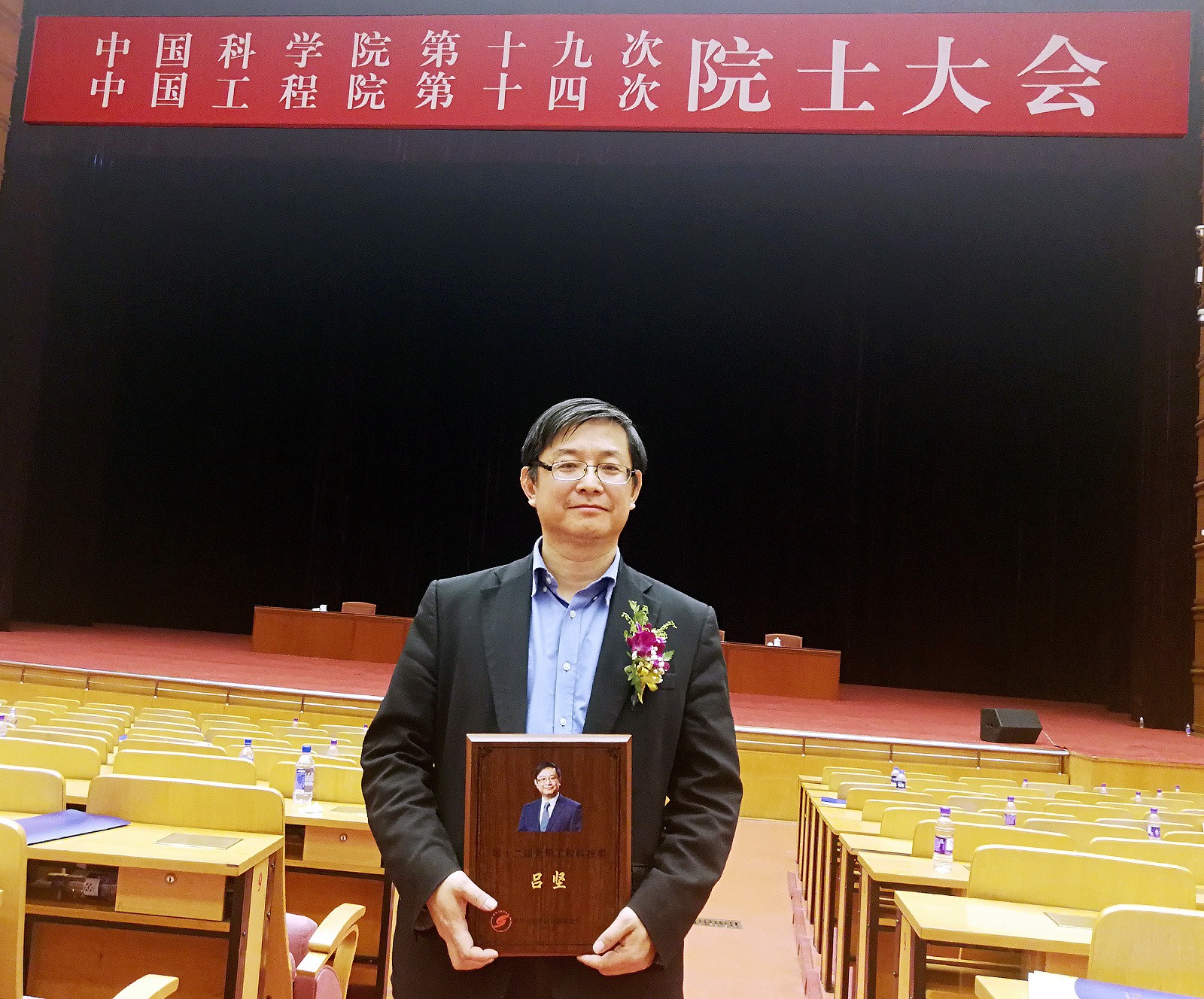Highest national honour in engineering, tech for CityU scientist
The 12th Guanghua Engineering Science and Technology Award was awarded on 30 May to Professor Lu Jian, a materials scientist focusing on structural metallic materials at City University of Hong Kong (CityU).
The Guanghua Engineering Science and Technology (EST) Prizes, composed of "Guanghua EST Achievement Award" and "Guanghua EST Award", are regarded as “the most prestigious award for engineering and technology achievement in China”.
“I am very honoured to receive this top award in the engineering and technology sector in China,” said Professor Lu, who is also Vice-President (Research and Technology) and Dean of Graduate Studies at CityU.
He said he was grateful to Professor Way Kuo, CityU President and Foreign Member of the Chinese Academy of Engineering, and the Hong Kong Academy of Engineering Sciences for nominating him.
Scientists from Hong Kong, Macau and Taiwan were included again in the selection for the Guanghua Award this year. Three scholars from Hong Kong have won the award for the first time. Professor Lu said these awards reflected how strongly peers on the mainland recognised the contributions of Hong Kong engineers and scientists, and that it strengthened the exchange of ideas on technology and innovation between Hong Kong and the mainland.
Professor Lu, Director of the Centre for Advanced Structural Materials (CASM) at CityU, and his research team had previously developed a dual-phase nanostructuring mechanism that had produced the world’s strongest supra-nano-dual-phase magnesium alloy. Their achievement was published as a cover story in the top academic journal Nature.
“President Xi Jinping said in a meeting with members of the Academy of Sciences and the Academy of Engineering this week that structural metallic materials in China were on their way to becoming among the most advanced in the world. We are pleased that CASM has made some well-known contributions in this regard,” said Professor Lu.
Professor Lu is also the Director of the Hong Kong Branch of National Precious Metals Material Engineering Research Centre, which was set up under the approval of the Ministry of Science and Technology (MOST) of the People’s Republic of China. The Hong Kong Branch is one of 22 state key laboratories and research centres in Hong Kong to have received national-level research funding from mainland China recently.
He said he hoped that this new initiative of the central government would enable Hong Kong’s universities and research institutes to play a bigger role in the development of technology in China and take part in research projects related to large-scale scientific facilities in the Greater Bay Area, such as the China Spallation Neutron Source. He added that he hoped China could fully utilise Hong Kong’s internationalised talent and enable Hong Kong to become the driving force behind innovative technologies in the region.
He stressed that applications in real life are an integral part of engineering and technology. Through active participation in collaborative research projects in the Greater Bay Area, he expressed his hopes that local universities could promote the transfer and application of advanced technology achievements in the mainland, and thereby contribute to technology development in Hong Kong, the Greater Bay Area as well as the whole country.
Working in the field of materials science for more than 30 years, Professor Lu’s main research interests relate to fabrication and mechanical properties of nanomaterials and advanced structural materials, fabrication techniques of materials with plastic deformation, and computational simulation of surface engineering. He currently holds 23 patents granted by Europe, the US and China. He has published more than 450 papers including over 340 papers published in top journals such as Nature and Science.
Having studied in France for many years, Professor Lu was elected as the first Chinese-born academician in 2011 by the National Academy of Technologies of France among 300 members. He is one of the first batch of Hong Kong experts selected for the National Science and Technology Programme Expert Database approved by the MOST. In addition, he is a Fellow of the Hong Kong Academy of Engineering Sciences and Fellow of the Hong Kong Institution of Science.
Established in 1996 and managed by the Chinese Academy of Engineering, the biennial Guanghua EST Prizes honour the excellent Chinese engineers and scientists who have attained outstanding achievements and have made significant contributions to engineering science and technology, as well as engineering management.
